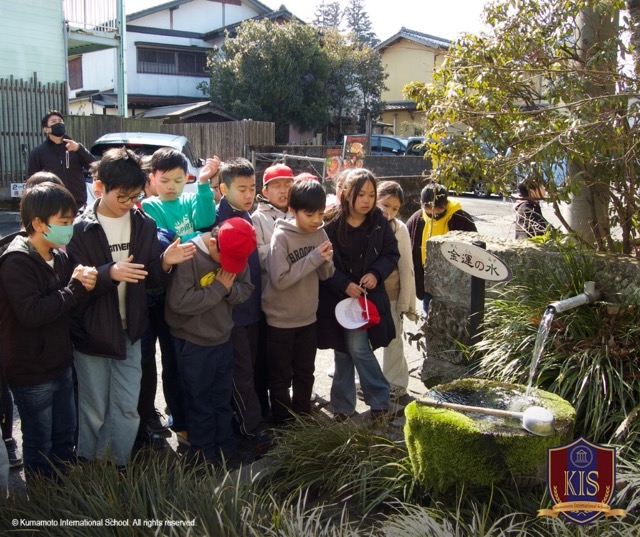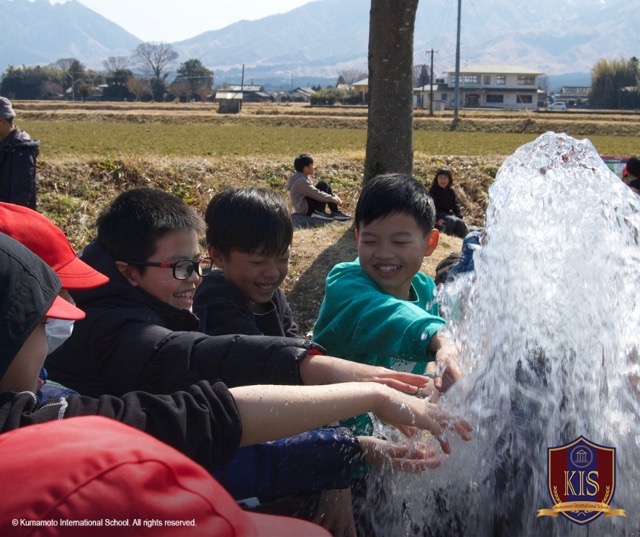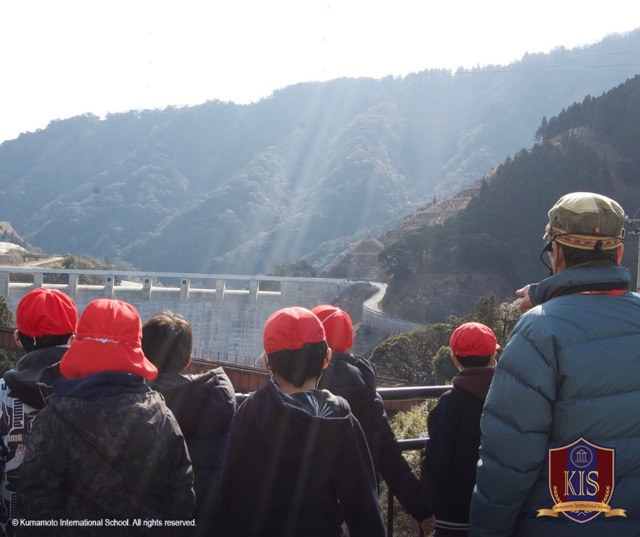世界はどのように機能するのか」をテーマにした探究単元の一環として、生徒たちは阿蘇カルデラへのフィールドトリップに出かけ、自然の水源がどのように地域社会を支えているかを探求しました。最初の訪問先は、旧小学校を利用した博物館がある立野ダムでした。ここで、生徒たちはダムが発電、洪水対策、日常生活の支援において果たす重要な役割について学びました。また、阿蘇カルデラの独特な地形が白川や黒川への水流にどのように影響を与えるかについても理解を深め、自然のプロセスと人間の革新が交わる点について考えました。
次に、グループは阿蘇市周辺の自然湧水を探索し、新鮮な湧水を味わい、圧力と標高差によって湧水が噴き上げる様子を観察しました。地域社会が井戸や貯水施設を通じてこの貴重な資源を管理する方法についても学びました。美しい湧水に囲まれた阿蘇神社への訪問は、彼らの学びに文化的な側面を加えました。「幸福の石」の発見や、現在進行中の修復活動についての議論は、彼らの体験をさらに豊かなものにしました。この実践的な探求は、自然資源を保護する重要性を強調し、人間と環境の微妙なバランスに対する理解を深めることにつながりました。
Exploring the Aso Caldera: A Journey Through Earth’s Natural Systems
As part of their Unit of Inquiry on *How the World Works*, Grade 4 students embarked on a field trip to the Aso Caldera to explore how natural water sources sustain their community. Their first stop was the Tateno Dam, where they visited a museum housed in a former elementary school. Here, they learned about the dam’s critical roles in generating electricity, controlling floods, and supporting daily life. The students also gained insights into how the unique landscape of the Aso Caldera influences the flow of water into the Shirakawa and Kurokawa rivers, connecting them to the intersection of natural processes and human innovation.
Next, the group explored the natural springs around Aso City, where they tasted fresh spring water and observed how pressure and elevation differences cause some springs to shoot up like fountains. They learned how local communities manage this precious resource through wells and storage facilities. The visit to Aso Shrine, surrounded by a network of beautiful springs, added a cultural dimension to their learning. The discovery of a “happiness rock” and discussions about ongoing restoration efforts further enriched their experience. This hands-on exploration highlighted the importance of preserving natural resources and deepened their appreciation for the delicate balance between humanity and the environment.





